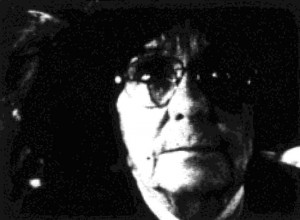
"West Texas by Alan E. Gadney of Sun Valley, Calif. Alan made this film while a student in the Department of Cinema, University of Southern California at Los Angeles, and it is a superb example of student work. The Logistics involved and problems encountered are hard to believe and yet the picture was made in California. This 55-minute 16mm film was awarded a Ten Best Medal, The Charles A. Kinsley Memorial Award, the Scenario Award and the Student Film Award" PSA Journal, Nov. 1970, 38.
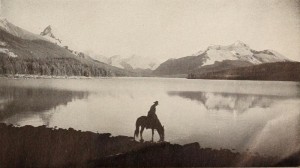
"Western Holiday offered one of those thrills in the sequence of sunrise on Mount Robson. Here Kodachrome caught, with what seemed magic, the first rosy glow on the cold, blue snow, which the continuity of photographic motion permitted to increase, to blossom and, finally, to blaze into a chromatic crown of jewels. To see this on the screen is to enjoy a rare experience. Hamilton H. Jones, in the highly intelligent cutting of his train sequences, gave the student of continuity another of these thrills. Those who are charmed by double turntable accompaniment will recognize the perfection with which an almost impossibly difficult feat of lip synchronization with record scoring has been handled. These are some of the higher spots in a film of unusually high general average. Mr. Jones is a Kodachrome movie maker of proved ability, who has made editing a special art. The film chosen for the first Hiram Percy Maxim Memorial Award will be used by Mr. Jones in his work as a lecturer on the vacation advantages of the Dominion of Canada, although it was made as his own enterprise, entirely at his own expense and not for compensation from a client. It is a part of his professional equipment. Briefly reviewed, Western Holiday carries the audience, via Canadian National Railways, from Victoria, Canada's most westerly metropolis, across the Rocky Mountains back to the Eastern Seaboard. Beginning with city views in Victoria and Vancouver, with strikingly colorful parades of the famous Canadian Mounted Police, we visit tourist centers and make trail trips from them. The camera goes into the interior of a glacier, it finds mountain goats and sheep, it clambers over the Continental Divide on horseback. All through the trip, it studies the progress of trains, weaving in and out of tunnels and over bridges. In his personal presentations of this film, Mr. Jones manipulates effects, such as whistles, bells, train noises and other oddments, with something approaching wizardry. In the face of competition of the highest order, Western Holiday is its own justification of preferment." Movie Makers, Dec. 1937, 602.
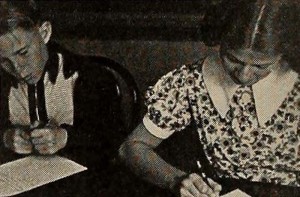
"First Film and When the Cat's Away, a double header entry, which takes honors jointly because of the strong relationship between the two, is the production of the Cinema Club of Lowell Junior High School, at Long Beach. Calif., and of the club's faculty adviser, Helen Rees Clifford. First Film, largely the work of Miss Clifford, summarizes the Junior High School group's experiences in producing When the Cat's Away, which is entirely the achievement of the youngsters. Together, the two films present a clear and concise picture of the initial production of a film by a junior high school movie club, from scenario writing and movie planning to the completed opus, ready for its premiere. So, in these two reels, one sees how the job of teaching movie making technique to youngsters, of ages from eleven to fourteen, can be handled efficiently and happily, and one learns how clear and coherent a little picture can be produced as a starter. Few high school photoplay clubs have begun so well and with so little lost motion. Very few high school first films are as clear and competent as When the Cat's Away." Movie Makers, Dec. 1938, 618.
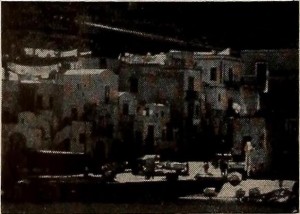
"From the Island of Capri, Helen Welsh has brought home a charming, sunny vignette in Where the Sirens Sang. It is the sort of film any traveler would like to have as a memento of a pleasant sojourn. Miss Welsh's seeing lens has captured the spirit of the countryside, its people, its luxurious beaches, its typical transportation. For this reviewer, Where the Sirens Sang plays a beckoning tune indeed." Movie Makers, Dec. 1953, 334-335.
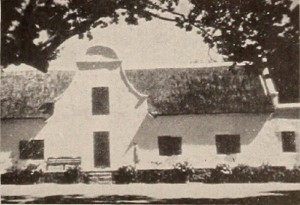
"The solid splendor of Dutch colonial existence in South Africa is attractively recreated in White Gables, by G. Brian McIntosh. Moving out from Capetown, the film carries one swiftly over the barrier crags of Table Mountain into the fertile valley beyond. Here, surrounded by its flowers and fields of grape, stands Groot Constantia, the great and graceful manor house built by Governor Simon van der Stel in 1685. Mr. Mcintosh presents it with sympathy, imagination and skill. Scene flows into scene, sequence into sequence, with a suave progression which could have been achieved only by the most cunning advanced plan. A gracious lady in 17th Century dress moves through the terraced grounds on the gentle errands of that leisured age. White Gables is a bright and glowing evocation of mood and manner which now are history." Movie Makers, Dec. 1946, 489.
"Wild Dogs of Africa is a film by a perennial winner, Fred Harshbarger of Colton, Calif. Most of us have seen films made in Africa but this nine minutes is not about the "run-of-the-mill" African animals that one expects. Who would think of making a film about wild dogs? Well Fred did - and because of it we all know just a little more of that part of the world. Naturally it's in color and shot with the usual Harshbarger "know-how". Winning the Nature Award was a natural for this picture" PSA Journal, Nov. 1969, 56.
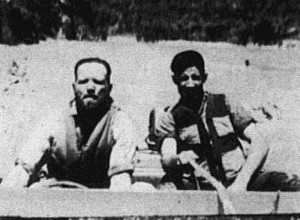
"Al Morton's "Wild Water and Bouncing Boats" takes us through Desolation and Gray Canyons on the Green River which flows into the great Colorado River. The Green River starts in northern Utah and joins the Colorado south of Arches Monument in Utah. The picture takes us down the Colorado as far as the Hoover Dam. The country abounds in desert and canyon scenery—to say it is spectacular is a display of modesty. There are canoes and other hand-powered craft on the turbulent rapids with upsets and the struggle to gain an island rock and the shore. There are craft equipped with outboard motors to drive it through turbulent waters and rapids. This film is packed with thrills for those who like rough water" PSA Journal, Nov. 1957, 33.
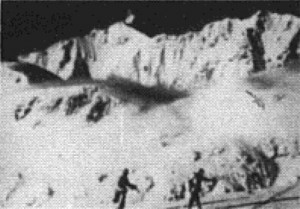
"A story of the natural wilderness, people, and mountains 200 miles from the sea, the wilderness alps of Stehekin in the North Cascade country. Brought into its scenic grandeur through the ages never the same, yet not to be changed by man. There are the wild gardens and glaciers high above the sea but far below the icecaps on Mt. Rainier, from time preceding us. A beautiful, relaxing retreat with a narration to be remembered for its refreshing call to the wilderness" PSA Journal, Nov. 1960, 42.
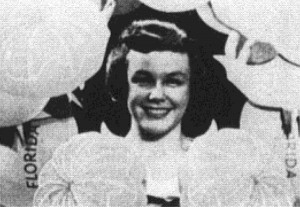
"Our man has been through a long, hard winter and with more snow on the way he goes to Florida. We visit many of the places and see and do the things vacationers like to do. We move from one interest to another and stay just long enough to like it. Our friend awakens from his Florida visit and sunburn, all from his over-long stay under the sun lamp. A delightful visit" PSA Journal, Nov. 1960, 40.
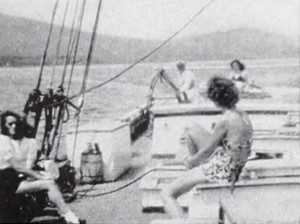
"Sidney Moritz likes to record the few vestiges that remain in this rapidly changing country of the days that were. After earlier voyages on an Ohio River "sternwheeler," he made two cruises on the Mattie, an old schooner that now hugs the New England coast and carries vacationers. In Windjammer there is cinematic beauty, with delightful scenes of masts and sails. There is also a detailed and very human record of the way in which the holiday makers — who also help with the ship's chores — enjoy a recreation both salty and salubrious. One is sure that they and the ship's crew — including grim old Captain Grant — had a grand time. Mr. Moritz must have had one, also, if his gay footage reflects his mood." Movie Makers, Dec. 1945, 497.
Total Pages: 37